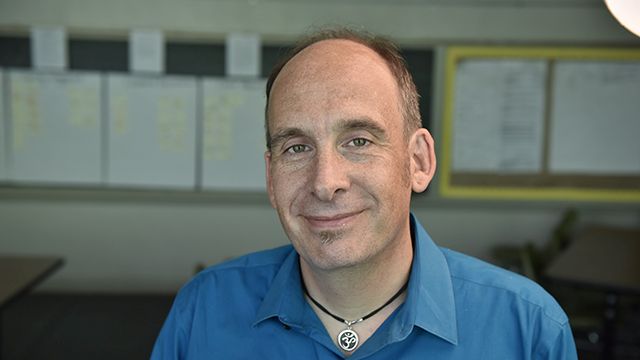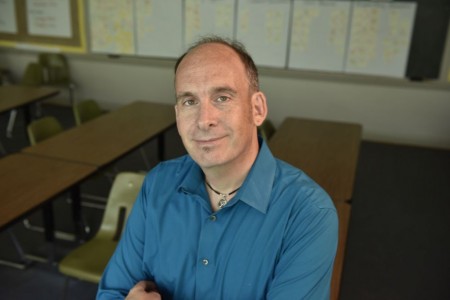Mark Coleman is using technology and creativity in innovative ways in the classroom

When Mark Coleman talks about issues affecting future employment and workforce development, he is quick to point out that one of the greatest threats to both is the digital divide between the haves and the have-nots.
More specifically, between the schools that have money and the schools that don’t.
Mark Coleman from Alabama NewsCenter on Vimeo.
“It’s beyond just using technology in the classroom, students need to use it to create their own opportunities,” said Coleman, district technology instructor for Montgomery Public Schools. “It’s not just necessary, I believe it is mandatory. We must prepare students for the jobs of the future.”
But the budget problems are real, he said, and the state’s ever-decreasing allocations to local districts mean that school systems need to be creative about how they provide, teach and use technology.
Coleman will discuss the importance of integrating technology into the classroom and its effect on students’ futures at Thursday’s Brighter Minds Education Summit in Birmingham.
Brighter Minds, Alabama Power Foundation’s education initiative, focuses on three critically important areas for preparing children for college and the workforce: Early childhood education; conservation education classes for students who are in fourth grade and above; and science, technology, engineering and math (STEM) courses and workforce development scholarships for high school students.
 Coleman is one of four panelists who will discuss how to prepare Alabama’s future workforce.
Coleman is one of four panelists who will discuss how to prepare Alabama’s future workforce.
He didn’t intend to have a career in the field of technology; just last year he was a social studies teacher in Montgomery’s Booker T. Washington Magnet High School. But his interest in technology began more than a decade ago, when he realized technology was quickly changing the classroom but educators seemed to always be playing “catch-up” with it.
Coleman decided he wanted to be at the forefront and instead of just using the latest technology in the classroom, he wanted to actually integrate it into his teaching lessons. In 2005, his classes went completely paperless. Over the years, he encouraged other teachers to have an online presence.
He said professional development is an absolute necessity when implementing technology in the classroom. You can’t just teach an educator how to use the technology, he said. “You have to show them how they can use the technology to develop and teach lesson plans.”
That’s part of what Coleman’s new job is about: training teachers and encouraging them to blog about their classrooms and be active on social media sites.
“A worksheet on a computer is still just a worksheet. The only thing you’ve done is saved a couple of trees,” he said. “We actually need to use the technology to empower our students in their educational and professional careers.”
Coleman understands the issues cash-strapped districts face. He works in Montgomery, after all. But, he said, there are many grants and free products available to help.
For example, he was looking for funding to attend the 2012 International Society for Technology in Education (ISTE) conference in San Diego. A simple Google search led him to apply for and receive the Fund for Teachers grant, which allowed him to attend the five-day conference.
While there, he learned about ISTE’s Passion-Based Learning Project contest and submitted a two-minute video application saying he intended to teach his government class about George Orwell’s “1984” by assigning a project involving video, sound editing and online applications.
His class, he said, would learn about Big Brother and government surveillance by using clips from a free audiobook version of “1984” and editing out audio bits on surveillance technology. They then would develop videos about modern technology edited to that audio.
Coleman won the grand prize and received a trip to the 2013 ISTE conference in San Antonio. His class, he said, got so into the project that he’s sure they learned and retained more information about the book than they would have by simply reading it and writing a book report.
“We have to continue using technological tools in teaching our students to create,” he said. “They will have more job security if they learn that, because if you just want to shuffle papers on a desk, well, we’re going to eventually find a way to automate that. The ones who can create something are the ones who will have a job.”





